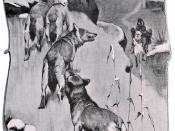Introduction
Violence is an element normally not immediately associated with children's literature. It is not assumed to be a common focus of stories written for children, and is subjected to informal, but powerful, societal constraints. Exposure to excessive or inappropriate violence during the formative years of childhood has long been thought to be harmful by parents, teachers, and society generally. The definition of what constitutes appropriate material, however, has varied considerably through the century. Violence of different forms and degrees has therefore remained a recurrent factor of numerous popular books for children in Britain throughout the twentieth century. Its presence in such successful works implies a significant degree of social acceptance and approval, and consequently offers useful insight as to British norms and values at different historical periods, and their relevance regarding children.
The concept of childhood in British society has been an evolving one. The centrality of children in modern culture was not always in evidence, nor were the particular needs of children always considered to be distinct from those of adults.
Prior to the Industrial Revolution, literary and artistic evidence depicts a world in which children were viewed primarily as smaller, less capable adults. Artwork containing children reflected such views through images of undersized men and women with oddly miniaturised features and tiny adult attire. Recreational books for children began to emerge in the late seventeenth century, but this material was heavily coloured with religious and moral instruction, often grim in nature.
In the late nineteenth century formal changes to the position of children in society began to emerge that distinguished childhood as a critical stage of life. Although the factories of the Industrial Revolution had saved the working classes from starvation, they came to be a condemnation to life of unrelenting toil and deprivation. The worst...


